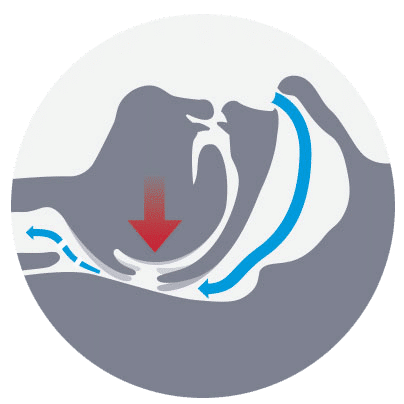Types of Apnea
Obstructive apnea
The walls of the oropharynx are completely closed, generating an inspiratory collapse of more than 10 seconds.
Obstructive sleep apnea is the most common type of sleep apnea, accounting for 84% of all sleep apnea diagnoses. 1
The upper airway may become obstructed by:
- excessive relaxation of muscles during sleep, which prevents the passage of air properly
- the weight of tissues in the oropharynx and neck contour that narrow the airway
- tonsillitis or other temporary reasons
- structural reasons, such as the shape of the nose, neck, or jaw

Hypoapnea
The walls are partially closed, decreasing the inlet diameter of the air passage for more than 10 seconds. There is no inspiratory collapse.
Central
Neurologically, the breathing control center does not send the nerve stimulus to breathe. There is no obstruction or muscular respiratory effort.
Mixed
Combination of central and obstructive apnea, with central and obstructive end.
References
Morgenthaler TI, Kagramanov V, Hanak V, Decker PA. Complex sleep apnea syndrome: is it a unique clinical syndrome? Sleep 2006;29(9):1203–9



